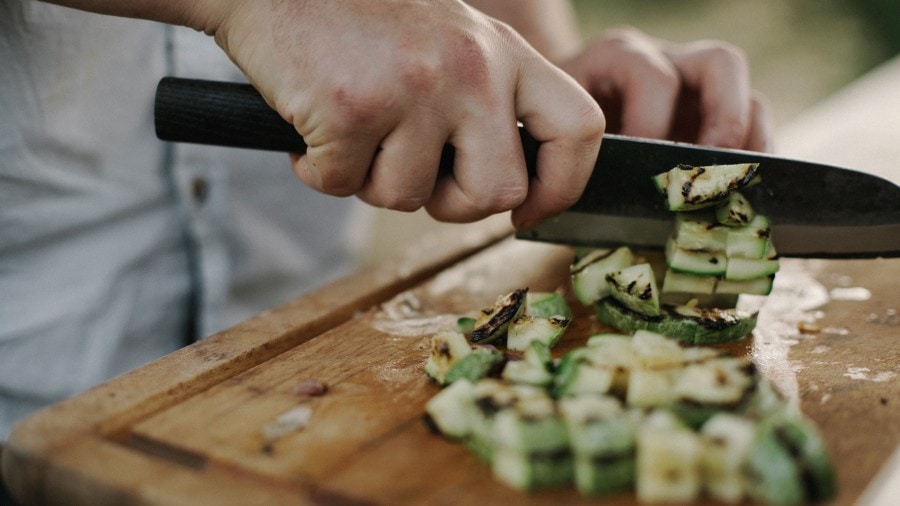The Raindrop Damascus Knife is more than just a visually stunning piece of cutleryits a testament to the marriage of art and functionality. As a kitchen professional, you understand the importance of having a reliable tool at your disposal. This knife, characterized by its unique raindrop pattern on the blade, not only delivers unparalleled performance but also adds an aesthetic appeal to your culinary arsenal.
For those actively involved in the culinary world, understanding the intricacies behind a raindrop damascus knife can be a game-changer. In this article, we delve into what makes these knives a staple for professionals, exploring their craftsmanship, uses, and maintenance needs.

What is a Raindrop Damascus Knife?
The raindrop damascus knife is crafted from Damascus steel, known for its distinctive pattern. The name comes from the circular patterns that resemble raindrops. This is achieved through a meticulous process of forging and folding multiple layers of steel, which not only results in a beautiful blade but one that is exceptionally strong and sharp.
For those who are curious about the origins of Damascus steel, you might find this history of Damascus steel enlightening.
The Craftsmanship Behind the Knife
The art of making a raindrop damascus knife is detailed and labor-intensive. It requires an expert hand to ensure the perfect balance between the layers of steel and the execution of patterns. This technique not only provides the blade with strength but also imparts flexibility, making it an ideal choice for various kitchen tasks.
Moreover, the quality of a Damascus knife is often determined by the number of layers and the precision with which the pattern is achieved. The Damascus boning knife is another example of this intricate craftsmanship that professionals hold in high esteem.
Why Choose a Raindrop Damascus Knife for the Kitchen?
For kitchen professionals, the tools you use can significantly impact the quality of food preparation. The raindrop damascus knife comes with several advantages:
- Sharpness: Thanks to the forging process, the blade retains its sharpness longer than conventional knives, reducing the time spent on sharpening.
- Durability: Its core strength allows it to withstand heavy use without losing its structural integrity.
- Aesthetic Appeal: Beyond its function, the raindrop pattern elevates the elegance of your kitchen space.
If youre considering adding to your collection, heres a look at how the Damascus fillet knife compares in terms of use and aesthetics.
Proper Care and Maintenance
Despite its robustness, a raindrop damascus knife requires proper care to maintain its performance. Regular cleaning with warm water and a mild detergent is recommended, followed by drying it immediately to prevent any rusting.
Professional chefs often use a honing rod to keep the blade sharp. Additionally, proper storage is crucial; using a knife block or a magnetic strip can help maintain the edge and the pattern.
For an in-depth guide on maintaining these exquisite blades, visit this resource on history and care of Damascus knives.
Conclusion
The raindrop damascus knife is more than just a practical toolit's a statement piece in any professional kitchen. Combining artistry with functionality, it not only enhances the execution of your culinary skills but also enriches the preparation experience. With detailed craftsmanship and enduring sharpness, its clear why such knives remain a favorite among professionals worldwide.
Frequently Asked Questions
What makes the raindrop pattern on the Damascus knife unique?
The raindrop pattern is achieved by a specialized forging and folding process, which involves layering the steel repeatedly to create a strong and beautiful design. Each knife may vary slightly, making each one a unique piece.
Is a raindrop Damascus knife easy to sharpen?
Yes, although the steel is hard, it can be sharpened using standard sharpening tools like a honing rod or a whetstone. Its ability to hold an edge longer means less frequent sharpening compared to other knives.
Can a Raindrop Damascus Knife be used for all kitchen tasks?
Absolutely. Because of its strength and durability, the knife is suited for a variety of kitchen tasks, from cutting meats to slicing vegetables. However, using it for tasks beyond its scope like cutting bones may not be recommended.

Further Reading
For those interested in exploring more about different types of Damascus knives, such as the Damascus steak knives, or frequently asked queries, you can explore suggested readings and insights on the art of these cutting tools.
This article contains affiliate links. We may earn a commission at no extra cost to you.


























